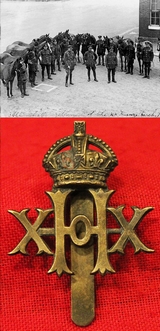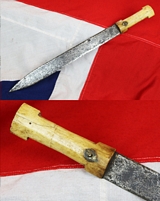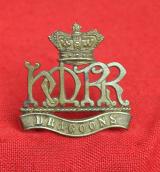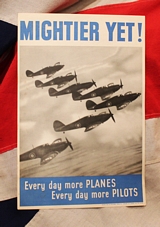An Antique 'Claw and Feather' Bronze Paper Knife or a “Unicorn” Page Turner.
Originally classified in the collecting world as a late Victorian page turner, yet in fact it may well not be a mythical collectible, or so-called ‘unicorn piece’, but thus actually a rare form of paper knife.
A most interesting piece for the bibliophile. In colour patinated bronze, possibly Austrian. Circa late 1800’s. 9.5 inches long.
Uncut pages were common to Victorian Era and earlier books, artifacts of the bookbinding practices of the day. As Spellerberg explains in Reading & Writing Accessories, long sheets of paper were folded numerous times to form a “signature” of pages or “leaves,” which would be printed on both sides. Signatures would be printed, collated, and then bound (which usually meant “sewn”) to create a book. “Most of the leaves were cut during the binding process,” he writes. “However, since all books were bound by hand at that time, leaves were sometimes left uncut and could not be opened unless they were cut.” Paper-knives made such books readable.
It wasn’t just books that required paper-knives to be read, which is why the tools came in all sizes. There were long ones for newspapers and magazines, as well as shorter ones for diminutive books made to fit in the palm of the hand. Regardless of their size, some were painted in handsome designs while others were carved and fitted with sterling-silver handles, transforming these prosaic implements of paper destruction into small works of art. And, of course, a great many paper-knives were treated as handheld advertisements, sold at tourist destinations as souvenirs or given away by companies wishing to extend their brands, as we might put it today.
Impossibly so, as it turns out: After researching the topic for several years, Spellerberg concluded that page turners simply did not exist during the Victorian Era. In fact, according to Spellerberg, page turners didn’t exist during any historical period at all, making them the unicorns, if you will, of office collectibles, mythical objects that tell us more about how we imagine people lived rather than how they actually did.
Page turners, then, were actually paper-knives, and paper-knives were the tools readers employed to get at the content inside an “unopened” book.
Matthew Haley of Bonhams, stated. “I was once told, but have never confirmed, that people still occasionally request books that have never been opened at the Bodleian Libraries in Oxford,” Haley says. “They are lent a paper-knife for the purposes of cutting the pages.” In fact, as Rosie Burke of the Bodelian told me via email, “I’m pleased to confirm that it is true that after all these years we still have many books with uncut pages—either completely uncut or only partially cut. Staff will issue paper-knives to readers for certain books, but anything that is particularly old or fragile will only be cut by either reading-room staff or a member of our conservation team.”
This is obviously good news for readers—as a library, the Bodelian is in the business of spreading knowledge rather than keeping it secreted within the uncut pages of the books on its shelves. But the utility of paper-knives raises an interesting dilemma for book collectors. Is a book with uncut pages more valuable than a comparable volume whose leaves have been sundered, however carefully, by a paper-knife?
“Generally speaking,” Haley says, “there is a slight premium placed by collectors on uncut or ‘unopened’ copies, as they are closer to how the book would have been originally supplied by the bookseller. It’s one of the fascinating ironies of book collecting,” he adds, “that an unreadable book could be worth more than one that’s ready to read.”
Some years ago we had an early edition of Darwin’s ‘On the Origin of Species’ from Winston Churchill’s personal library, and many pages were still uncut, which demonstrates that despite being an early edition from the mid 19th century it had neither been read or even cut by Spencer Churchill or Winston Churchill during their ownership read more
220.00 GBP
A Polish Republic Order Of Merit Medal with Miniature in Original Box
Originated in 1923. At the time of its establishment in 1923, the Cross of Merit was the highest civilian award in Poland. It was awarded to citizens who went beyond the call of duty in their work for the country and society as a whole. May be awarded twice in each grade to the same person. 1950's PRL centre read more
110.00 GBP
Edward VIIth 20th Hussars Cap Badge, Used in WW1
The regiment was not deployed to South Africa until December 1901 for service in the Second Boer War and therefore only took part in the final drives against the Boer commandos in spring 1902. The regiment was based in Ireland again from 1908 to 1911.
The regiment, which was based in Colchester at the start of the First World War, landed in France as part of the 5th Cavalry Brigade in the 2nd Cavalry Division in August 1914 for service on the First World War. The regiment saw action at the Battle of Mons in August 1914 and both the First Battle of the Marne and the First Battle of the Aisne in September 1914. It went on fight at the First Battle of Ypres in October 1914, the Battle of Arras in April 1917 and the Battle of Cambrai in November 1917. It later took part in the German Spring Offensive in 1918, the Battle of Amiens in August 1918 and the final push as the war drew to a close read more
65.00 GBP
A Most Scarce Samurai Commander's Saihai, A Samurai Army Signaller
Edo period. Lacquered wooden handle with metal mounts and a long yak hair fitting. For a commander to signal troop movements to his samurai army in battle. A Saihai usually consisted of a lacquered wood stick with metal ends. The butt had a hole for a cord for the saihai to be hung from the armour of the samurai commander when not being used. The head of the saihai had a hole with a cord attached to a tassel of strips of lacquered paper, leather, cloth or yak hair, rarest of all were metal strips. We show the lord Uesugi Kenshin hold his in an antique woodblock print in the gallery. The saihai first came into use during the 1570s and the 1590s between the Genki and Tensho year periods. Large troop movements and improved and varied tactics required commanders in the rear to be able to signal their troops during a battle Uesugi Kenshin (February 18, 1530 ? April 19, 1578) was a daimyo who was born as Nagao Kagetora, and after the adoption into the Uesugi clan, ruled Echigo Province in the Sengoku period of Japan. He was one of the most powerful daimyos of the Sengoku period. While chiefly remembered for his prowess on the battlefield, Kenshin is also regarded as an extremely skillful administrator who fostered the growth of local industries and trade; his rule saw a marked rise in the standard of living of Echigo.
Kenshin is famed for his honourable conduct, his military expertise, a long-standing rivalry with Takeda Shingen, his numerous campaigns to restore order in the Kanto region as the Kanto Kanrei, and his belief in the Buddhist god of war?Bishamonten. In fact, many of his followers and others believed him to be the Avatar of Bishamonten, and called Kenshin "God of War". read more
650.00 GBP
Antique Persian Carved Bone Hilted Kindjal Short Sword
18th to Early 19th Century. The blade has traces of a complex etched design, possibly including some Islamic script. Carved bone hilt with single silver leaf d?cor and a nail mounting stud. Old cracking to hilt and overall russetting to the old blade. Overall 201/4 inches long read more
195.00 GBP
A Fine Bladed Indonesian Keris, Nickel Iron Meteoric Blade
19th Century Keris Dagger/Sword, but the blade may be far older. This Indonesian ceremonial dagger or Keris is believed to date from the 1800's based on the style, materials and condition of the steel. The handle made of wood indigenous to Java, appears to be from the 19th century. As the keris is handed down from generation to generation (sometimes over centuries), the wooden handle and scabbard are often replaced with the blade remaining original. Used in cultural ceremonies and traditionally worn as a symbol of status, the Keris is an important cultural item in Indonesian and Malaysian cultures. This particular example is done in the dapur bener (straight blade) style, and was hand forged with alternating laminations of so-called iron and meteoric nickel-rich iron. As a historic item that the blade can bu up to 300 years old or more, there is some rust and pitting in parts on the blade. However, the unique patterns of nickel in the steel are very visible on the blade and the edges are still quite sharp.
Painting in the Royal Collection by Frans Francken the Younger in the gallery, photo 10, painted in 1617, titled 'Cabinet of a Collector', clearly shows, top left, a 16th century Kris dagger, Even as early as the 16th century, awareness and collectability of the Indonesian kris had reached far into Europe.
The kris or keris is a distinctive, asymmetrical dagger from Indonesia. Both weapon and spiritual object, the kris is considered to possess magical powers. The earliest known kris go back to the tenth century and most probably spread from the island of Java throughout South-East Asia.
Kris blades are usually narrow with a wide, asymmetrical base. The sheath is often made from wood, though examples from ivory, even gold, abound. A kris’ aesthetic value covers the dhapur (the form and design of the blade, with some 40 variants), the pamor (the pattern of metal alloy decoration on the blade, with approximately 120 variants), and tangguh referring to the age and origin of a kris. A bladesmith, or empu, makes the blade in layers of different iron ores and meteorite nickel. In high quality kris blades, the metal is folded dozens or hundreds of times and handled with the utmost precision. Empus are highly respected craftsmen with additional knowledge in literature, history and occult sciences.
Kris were worn everyday and at special ceremonies, and heirloom blades are handed down through successive generations. Both men and women wear them. A rich spirituality and mythology developed around this dagger. Kris are used for display, as talismans with magical powers, weapons, sanctified heirlooms, auxiliary equipment for court soldiers, accessories for ceremonial dress, an indicator of social status, a symbol of heroism, etc
No scabbard read more
345.00 GBP
A Most Scarce Victorian Boer War Cap Badge of Her Majesty's Reserve Regiment of Dragoons
Used for only two years in service from 1900. Brass with intertwined initials, 'HMRR', above a scroll bearing the title, 'Dragoons'. Two lugs on reverse. The regiments were all disbanded in 1902 at the end of the Boer War.
A whole series of reserve regiments were raised during the Boer War (1899-1902). They were formed as a result of Army Orders issued in 1900 and consisted of men on the Reserve who could sign up. They were used for Garrison duties in Great Britain and were not liable for service overseas. These units were separate from the Volunteers, and Imperial Yeomanry which had also been raised at the same time.
The regiments were organised to follow elements of the regimental system. They included the Reserve Regiment of Dragoons, Lancers, Hussars, Royal Rifles Reserve Regiment and regional regiments such as the Royal Southern Reserve Regiment. There was also a Royal Guards Reserve Regiment, but this used the cap badges of the parent regiments, rather than bespoke badges which were introduced for the other regiments. read more
110.00 GBP
An Original Ancient 13th Century, Crusader Knight's Iron Battle Mace & Scorpion Head
Pineapple shaped head with large mounting hole. The type as were also used as a Flail Mace, with the centre mount being filled with lead and a chain mounted hook, when it was not mounted on a haft, as this mace is. Flattened pyramidical protuberances, possibly English or East European. Made for a mounted Knight in the era of the Crusades, to use as an Armour and Helmet Crusher in mortal combat. Although made in the 1200's it would have been continually used up to the 15th to 16th century. On a Flail it had the name of a Scorpion in England or France, or sometimes a Battle-Whip. It was also wryly known as a 'Holy Water Sprinkler'. King John The Ist of Bohemia used exactly such a weapon, as he was blind, and the act of 'Flailing the Mace' meant that his lack of site was no huge disadvantage in close combat. Although blind he was a valiant and the bravest of the Warrior Kings, who perished at the Battle of Crecy against the English in 1346. On the day he was slain he instructed his Knights [both friends and companions] to lead him to the very centre of battle, so he may strike at least one blow against his enemies. His Knights tied their horses to his, so the King would not be separated from them in the press, and they rode together into the thick of battle, where King John managed to strike not one but at least four noble blows. The following day of the battle, the horses and the fallen knights were found all about the body of their most noble King, all still tied to his steed. read more
875.00 GBP
A Beautiful & Very Fine Quality Gilt Early Belgian Order of the Crown, Gold Medal, For The Liberation of Belgium From the Nazi Occupation
In gilt bronze and excellent condition. The Order may also be bestowed to foreign nationals and is frequently awarded to military and diplomatic personnel of other countries stationed in (or providing support to) Belgium. During the Second World War, the Order of the Crown was extensively authorized for award to Allied military personnel who had helped to liberate Belgium from the occupation forces of Nazi Germany.
The Order of the Crown is awarded by royal decree.
The Order was established on October 15, 1897 by King Leopold II in his capacity as ruler of the Congo Free State. The order was first intended to recognize heroic deeds and distinguished service achieved for service in the Congo Free State. In 1908, the Order of the Crown was made a national honour of Belgium, junior to the Order of Leopold.
read more
95.00 GBP
Mightier Yet! Every Day More Planes Every Day More Pilots Original WW2
Propaganda poster for the British wartime RAF and the mighty Hurricane. Printed for HM Stationary Office by J. Weiner Ltd London WC1. A propaganda information and recruitment poster. The size as were used in the underground trains advertising panels, or the back of black cabs. Britain re-created the World War I Ministry of Information for the duration of World War II to generate propaganda to influence the population towards support for the war effort. A wide range of media was employed aimed at local and overseas audiences. Traditional forms such as newspapers and posters were joined by new media including cinema (film), newsreels and radio. A wide range of themes were addressed, fostering hostility to the enemy, support for allies, and specific pro war projects such as conserving metal and growing vegetables. In 1940 in particular, Winston Churchill made many calls for the British to fight on, and for British units to fight until they died rather than submit. His calls for fight to victory inspired a hardening of public opinion. Determination raised the numbers of the Home Guard and inspired a willingness to fight to the last ditch, in a manner rather similar to Japanese determination, and the slogan "You can always take one with you" was used in the grimmest times of the war. British victories were announced to the public for morale purposes, and broadcast to Germany for purposes of undermining morale.
Even during Dunkirk, an optimistic spin was put on how the soldiers were eager to return.
When the U-boat commander Gunther Prien vanished with his submarine U-47, Churchill personally informed the House of Commons, and radio broadcasts to Germany asked, "Where is Prien?" until Germany was forced to acknowledge his loss.
The turn of the war made BBC's war commentaries much more stirring.
We never normally comment on the investment potential of any collectable, but the potential for all underpriced WW1 and WW2 posters must be incredible, for example the more famed poster, 'Keep Calm and Carry On' can now sell for over £20,000.
Good condition 10 inches x 15 inches read more
395.00 GBP











